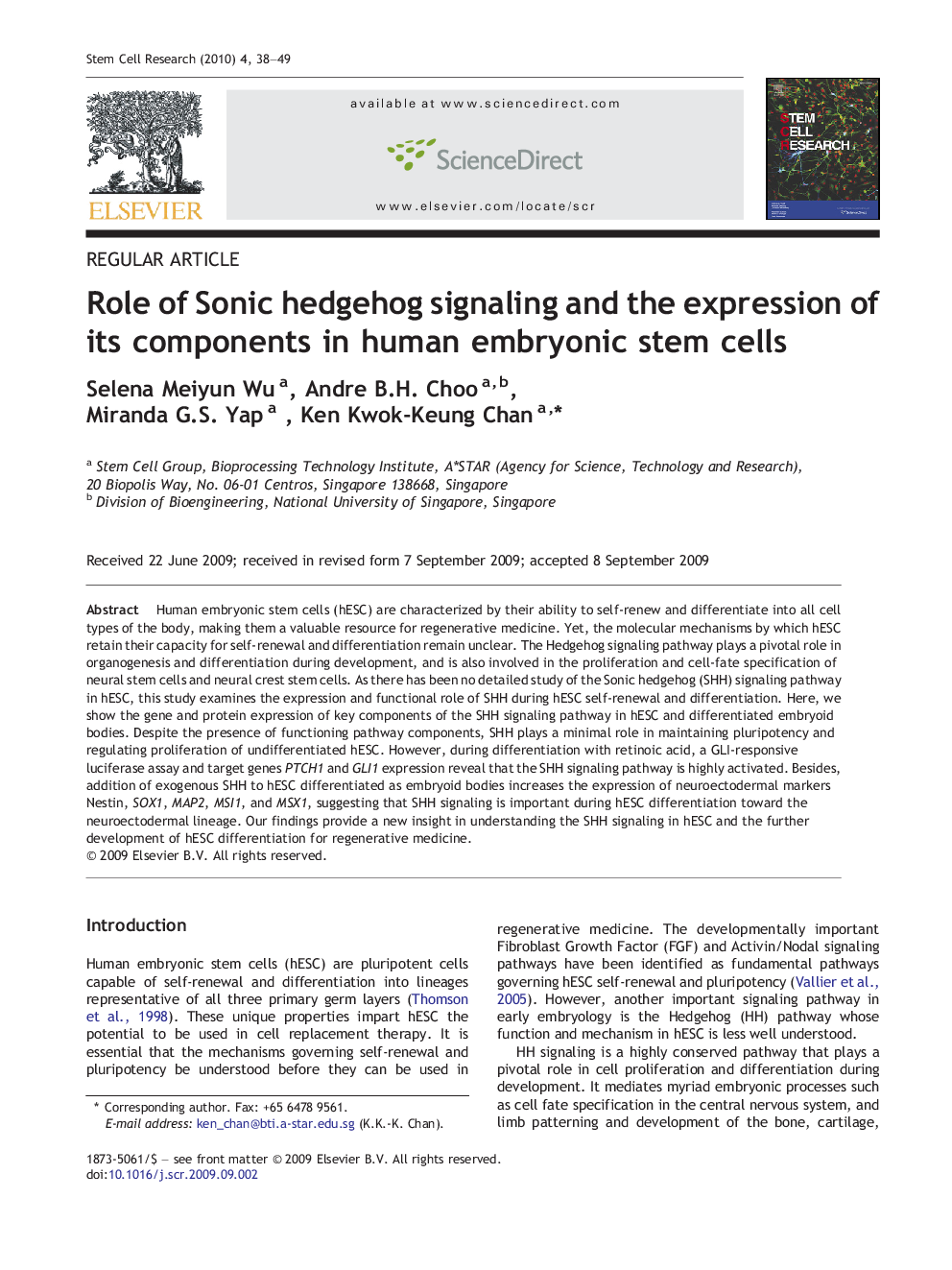| Article ID | Journal | Published Year | Pages | File Type |
|---|---|---|---|---|
| 2094498 | Stem Cell Research | 2010 | 12 Pages |
Human embryonic stem cells (hESC) are characterized by their ability to self-renew and differentiate into all cell types of the body, making them a valuable resource for regenerative medicine. Yet, the molecular mechanisms by which hESC retain their capacity for self-renewal and differentiation remain unclear. The Hedgehog signaling pathway plays a pivotal role in organogenesis and differentiation during development, and is also involved in the proliferation and cell-fate specification of neural stem cells and neural crest stem cells. As there has been no detailed study of the Sonic hedgehog (SHH) signaling pathway in hESC, this study examines the expression and functional role of SHH during hESC self-renewal and differentiation. Here, we show the gene and protein expression of key components of the SHH signaling pathway in hESC and differentiated embryoid bodies. Despite the presence of functioning pathway components, SHH plays a minimal role in maintaining pluripotency and regulating proliferation of undifferentiated hESC. However, during differentiation with retinoic acid, a GLI-responsive luciferase assay and target genes PTCH1 and GLI1 expression reveal that the SHH signaling pathway is highly activated. Besides, addition of exogenous SHH to hESC differentiated as embryoid bodies increases the expression of neuroectodermal markers Nestin, SOX1, MAP2, MSI1, and MSX1, suggesting that SHH signaling is important during hESC differentiation toward the neuroectodermal lineage. Our findings provide a new insight in understanding the SHH signaling in hESC and the further development of hESC differentiation for regenerative medicine.
